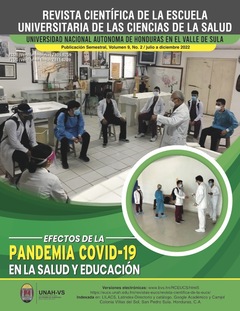Comparison between dolutegravir or efavirenz-based therapy in population with Human Inmunodeficiency Virus
DOI:
https://doi.org/10.5377/rceucs.v9i2.17261Keywords:
Integrase inhibitors, antiretroviral therapy highly active, HIVAbstract
In 2018, the World Health Organization (WHO) updated its recommendations for the treatment of Human Immunodeficiency Virus (HIV) infections, establishing the regimen based on dolutegravir as the first line and the regimen based on efavirenz as an alternative line, later in 2019 Honduras introduced dolutegravir for its use in men, and women with family planning methods. Objective: The main objective of the study is to compare the effectiveness of dolutegravir and efavirenz in achieving viral suppression in the population infected with HIV attended at the Comprehensive Care Service of the Mario Catarino Rivas Hospital (CCS-HMCR) during the period 2017-2020. Population and methods: Retrospective observational study, which has been carried out in the CCS-HMCR in Honduras. The population over 18 years of age with a new HIV diagnosis who started antiretroviral therapy (ART) based on dolutegravir in the period 2019-2020 was studied, and compared with those who started ART based on efavirenz in the period 2017-2018. Results: Median baseline viral load (interquartile range) was 8,658 copies/ml (1,036-27,710) in the efavirenz group and 44,303 copies/ml (2,040-115,240) in the dolutegravir group; viral load at 24 weeks of therapy was 0 copies/ml (0-139) and 40 copies/ml (40-90) respectively. Conclusions: Dolutegravir-based therapy is superior to efavirenz-based therapy achieving viral suppression and increasing CD4 T-lymphocyte count.
Downloads
370




